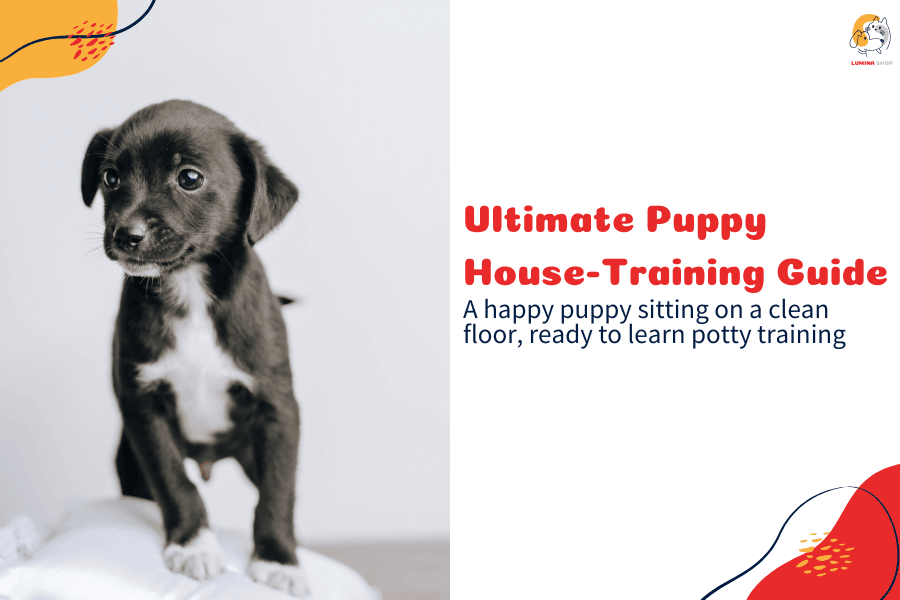
How Do I House-Train My Puppy?
House-training your puppy is one of the first and most important lessons in their new home. While accidents are part of the process, consistency, patience, and the right training techniques can help your puppy learn quickly.
In this guide, we’ll cover step-by-step potty training methods, common mistakes to avoid, and essential supplies to make house-training smooth and stress-free.
Recommended Product:
Absorbent Puppy Training Pads – Ideal for indoor potty training and accident prevention.

1. How Long Does It Take to House-Train a Puppy?
Every puppy is different, but most puppies take 4 to 6 months to be fully house-trained. Factors that affect training time include:
✔ Breed & Size – Smaller breeds may need more frequent potty breaks.
✔ Age – Younger puppies have smaller bladders and need more time.
✔ Consistency – Following a regular potty schedule speeds up training.
Recommended Product:
No-Mess Puppy Cleaning Spray – Helps remove odors from accidents to prevent repeat marking.

2. Step-by-Step Puppy Potty Training Guide
Step 1: Set a Regular Schedule
Take your puppy out first thing in the morning, after meals, after naps, before bed, and every 1-2 hours throughout the day.
Recommended Product:
Portable Dog Water Bottle – Keep your puppy hydrated, especially during outdoor potty trips.
Step 2:Pick a Potty Spot
Always take your puppy to the same outdoor potty area to build familiarity.
Step 3: Use Positive Reinforcement
Immediately reward successful potty breaks with training treats and praise.
Step 4: Supervise Indoors
Keep an eye on your puppy to catch early signs like circling, sniffing, or whining.
Recommended Product:
Indoor Puppy Playpen – Keeps your puppy in a safe, designated potty-training area.
Step 5: Crate Training for Housebreaking
Puppies naturally avoid soiling their sleeping space. Using a puppy crate helps them develop bladder control.

3. Common House-Training Mistakes to Avoid
- Punishing Accidents – This can create fear rather than learning. Instead, clean up messes and move on.
-Skipping a Schedule – Inconsistency confuses your puppy.
-Using the Wrong Cleaning Products – Regular cleaners don’t eliminate odor. Use enzyme-based sprays to remove lingering scents.

4. Nighttime Potty Training Tips
-Limit Water Before Bed – Stop giving water 1-2 hours before bedtime.
-Take One Late-Night Break – A final potty trip before bed helps prevent accidents.
-Use a Crate – A comfortable crate keeps your puppy secure overnight.

5. When to Expect Fewer Accidents
Most puppies show improvement by 4 months and are fully house-trained by 6 months with consistent training.
-Training Success Tips:
✔ Stick to a routine
✔ Be patient and positive
✔ Use the right tools and products
Recommended Products:
🐾 Puppy Training Pads – For indoor training.
🐾 Odor Eliminator Spray – Removes stains and odors from accidents.
🐾 Dog Bell for Potty Training – Teaches your puppy to signal when they need to go outside.

Conclusion
House-training takes time and patience, but with a consistent routine and positive reinforcement, your puppy will learn quickly.
For the best training tools, check out Lumina Pet Shop for puppy pads, crates, training leashes, and odor removers to make house-training easier.
Happy training! 🐶🚀
